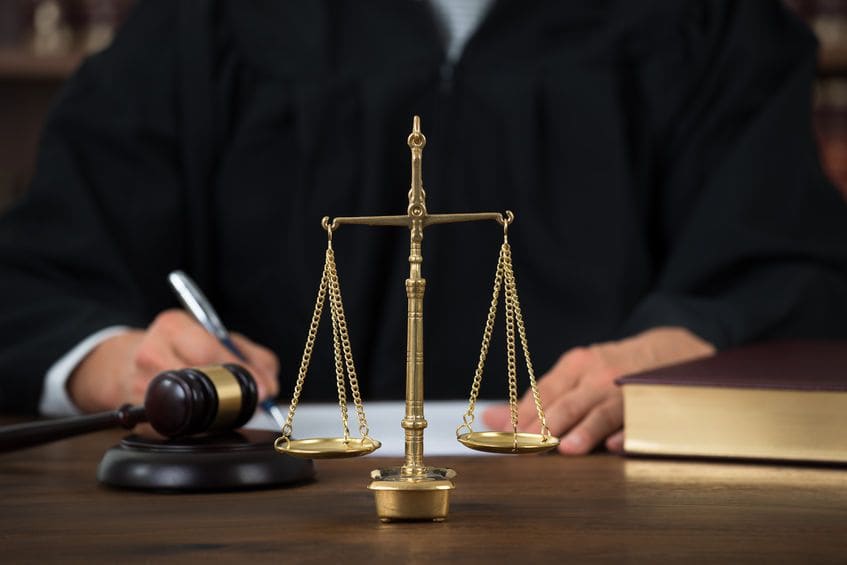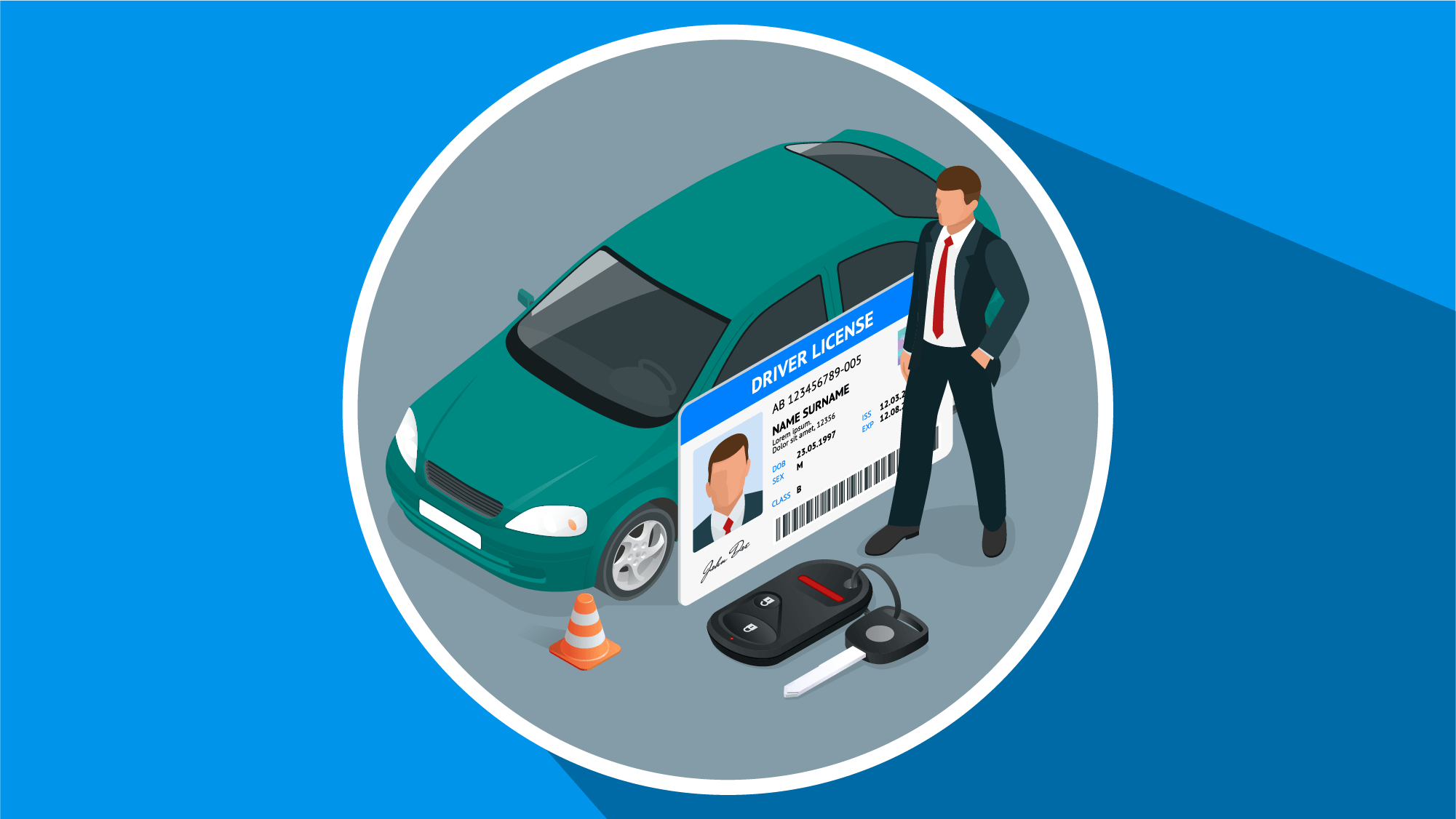In California, driving on public roads is legally considered a privilege, not a right. California law therefore restricts who can drive a motor vehicle, and under what circumstances. The most fundamental driving law is the requirement of a license—it is a crime to drive in California without a valid driver’s license.
If the driver is a California resident, they must have a valid driver’s license issued by the State of California. But, if the driver is over the age of 18 and resides outside the State of California, the license can be issued from the government of the driver’s home state or country.
This article explores the crime of driving without a license in California, and what it means for someone to be charged with this offense.
- The Elements of Driving Without a Driver’s License
- “Driving” Defined
- What Constitutes a “Valid” License
- The Intent Requirement
- Reasons for Not Having a Valid License
- What If the Driver Just Forgot Their License?
- Penalties for Driving Without a Driver’s License
- Other Consequences of a Conviction for Driving Without a License
- Potential Defenses to a Charge of Driving Without a License
- Strategies for Defending Driving Without a License
- Know the Charge and the Possible Penalties
- Prove the Driver Was Legitimately Licensed
- Plea Bargaining
- Challenge Government Misconduct
- Final Thoughts
- References
The Elements of Driving Without a Driver’s License

To be convicted of a crime in California, several facts must be proven. These are called “elements” of the crime.
In cases involving driving without a license, the elements are provided by several sections of the California Vehicle Code, including sections 12500. The elements as follows:
- Driving. A driver is a person who has physical control over a motor vehicle and makes it move. A motor vehicle is any motor-powered vehicle that can be moved on land. It does not include human-powered vehicles, like bicycles or skateboards.
- In a Public Area. It is unlawful to drive without a license in a public area. Public areas, for these purposes are places that are publicly-maintained and open to public use, like streets and freeways. Public areas can also include free private parking lots that are held open for public use by retail customers.
- Without a Valid License. A person commits the crime of driving without a license if they do not have a valid government-issued license in their possession.
These elements are explored in more detail below.
“Driving” Defined
California courts hold that driving is the willful and intentional controlling of the car in order to move it and actually making it move. A driver is driving when they cause the car’s wheels to turn and move the car from one place to another, even if only an inch away .
Simply sitting behind the wheel does not constitute driving for the purposes of driving without a license, but it can be circumstantial evidence that you recently drove the vehicle without a valid driver’s license.
What Constitutes a “Valid” License
A driver’s license is a valid license permitting an individual to operate a motor vehicle within his or her state, territory, or country of residence.
To be considered valid, the driver’s license must meet the following requirements:
The driver’s license was issued by the government where the driver resides (in the United States, that is a state, territory, or district-issued license);
- The driver’s license was issued by the government where the driver resides (in the United States, that is a state, territory, or district-issued license);
- It contains true information, such as the driver’s current address, name, and age;
- It has not been adulterated or changed;
- It has not been revoked; and
- It is the driver’s own license and not actually issued to someone else.
If any of these requirements are not met, the driver risks being charged with the crime of driving without a license under California law (Vehicle Code, § 12500).
The Intent Requirement
With most crimes, some element of intent is required. Meaning, the defendant usually must have committed the crime intentionally. With driving offenses, however, there is sometimes no intent requirement.
A strict liability offense means that the driver does not need to have criminal intent or prior knowledge that he or she will drive around under the influence before committing the offense.
Driving without a license may or may not be a strict liability offense. It is a strict liability offense if a person simply does not have a valid license in his or her possession while driving. This means that there does not need to be any intent or knowledge that the person is driving without a license.
But, when someone’s license is revoked or suspended, knowledge of the revocation or suspension is an element of the crime. As such, a driver does not commit the crime of driving without a license unless they have been reasonably informed that his or her license has been revoked or suspended.
It can sometimes be difficult to prove that the driver had no knowledge that his or her license was suspended or revoked. Courts will presume that the driver knew of the suspension or revocation of their license if the Department of Motor Vehicles mailed a notice of the suspension or revocation to them.
Reasons for Not Having a Valid License
There are generally three reasons why a driver does not have a valid driver’s license:
- Never Licensed. A person who is not licensed to drive or does not currently possess a valid driver’s license may not drive.
- License Lapsed. A person may not use an invalid driver’s license. Expired licenses and licenses that are no longer accurate (like licenses with incorrect addresses) are not valid.
- License Revocation. A person whose driver’s license has been revoked or suspended does not have a valid driver’s license. They therefore may not drive a motor vehicle.
There is, however, an exception to these rules: If the driver has a valid learner’s permit and is driving as part of his or her driver’s instruction with a licensed driver, they may legally drive. But a person who only has a learner’s permit may not drive by him- or herself.
What If the Driver Just Forgot Their License?
California law requires that a valid driver’s license must be in the driver’s possession when they are driving. Additionally, the driver must present his or her license, on request, to police officers when they are pulled over.
Fortunately, there is some wiggle room with this rule. The driver can get a charge of driving without a license dismissed if they can show they had a valid license at the time of their stop. To prove this:
- The driver must go to court a produce a duly-issued driver’s license, and
- The driver’s license must have been valid at the time they were ticketed or arrested.
If the driver has been charged three or more times for driving without a license, the court is no longer required to dismiss the charge under this exception.
If the driver can only produce a temporary or duplicate driver’s license in court, the court is not required to dismiss the charge. The driver will instead have to prove:
- The temporary or duplicate driver’s license was issued before the driver was ticketed or arrested,
- The driver’s driving privilege and license had not been suspended or revoked, and
- The driver was eligible for the temporary or duplicate driver’s license.
Penalties for Driving Without a Driver’s License

The range of penalties for driving without a license will depend on whether the driver has had their license revoked. Driving with a revoked license is a more serious violation than simply driving without a license.
If the driver is not driving with a revoked or suspended license, the charge will be a violation Vehicle Code section 12500. If the driver isdriving with a revoked or suspended license, they will be charged with a violation of Vehicle Code section 14601, 14601.1, 14601.2, or 14601.5.
The penalties for each of these crimes are described in the tables below.
Driving Without a License (VC 12500)
Driving without a valid driver’s license in California can be charged as either an infraction or a misdemeanor. Misdemeanors are more serious than infractions.
An infraction is technically still a crime, but it is not punishable by jail time or probation. Also, infractions do not usually appear on a person’s criminal record. But it will appear on the person’s driving record.
A misdemeanor, on the other hand, can be punished by jail time, probation, and fines. As such, it can be important for people charged with the crime of driving without a license to seek an infraction conviction, rather than a misdemeanor conviction.
In California, the penalties for driving without a valid driver’s license are as follows:
| Code Sections | Vehicle Code, §§ 12500, 40000.1 Penal Code, §§ 17, 19.8 |
| Custody Time | None |
| Possible Fine | Up to $250.00 |
| Code Sections | Vehicle Code, §§ 12500, 40000.11 Penal Code, § 19 |
| Custody Time | Imprisonment in county jail for up to six months |
| Possible Fine | Up to $1,000.00 |
| Other Consequences | Informal probation in some cases |
The penalties may be more severe if the driver has previously been found guilty of driving without a license or for other driving-related violations. While a judge may not sentence above the maximum allowed, in order to deter further crime, a judge may sentence a repeat offender to harsher fines and longer incarceration times.
Driving With a Revoked License (VC 14601)
As mentioned above, driving with a revoked or suspended license is a more serious violation than simply driving without a license. Nevertheless, it is still usually treated as a misdemeanor.
In California, the penalties for driving on a revoked or suspended license are usually as follows:
| Code Sections | Vehicle Code, §§ 14601, 14601.1, 14601.2, or 14601.5 |
| Violation Type | Misdemeanor, unless charged as an infraction under Vehicle Code section 14601.1. |
| Custody Time | Imprisonment in county jail for up to six months. In some cases, the court is required to impose a minimum jail time of either five or ten days. |
| Possible Fine | Between $300.00 and $1,000.00 |
| Other Consequences | Informal probation in some cases. If drugs or alcohol were involved, the court may also require the installation of an ignition interlock device on the driver’s vehicle for up to three years. |
If this violation occurs within five years of a violation of Vehicle Code section 14601.1, 14601.2, or 14601.5, then:
- The jail time can double to up to one year,
- The range of potential fines increases to between $500.00 and $2,000.00, and
- The court will be required to impose a minimum jail time of five or 10 days in county jail.
If the driver received probation the first time, they may get it again, but still must serve five or 10 days in county jail.
Other Consequences of a Conviction for Driving Without a License

In addition to the sentencing consequences discussed above, a conviction for driving without a license can have some significant consequences on a person’s life. Those include:
- Misdemeanor violations of driving without a license are a matter of public record and may be found on a background check.
- Moving violations on your driving record can raise insurance rates. Those who are habitual offenders may find it more difficult to find a company that will insure them and at a reasonable rate.
- It is possible that a judge may order someone to wait to get a driver’s license if caught driving without their license.
- Lack of a clean driving record can make it very difficult to find work that requires driving a company vehicle or transporting other people.
Potential Defenses to a Charge of Driving Without a License

The type of defense will depend heavily on the reason the driver didn’t have a license in his or her possession while driving. Here are some examples of possible defenses:
- The driver forgot their license at home. The law states that one must produce valid driver’s license upon arrest, but that one can bring a valid license to court to prove that he or she was actually licensed at the time of arrest.
- It was an emergency. It may be excusable to drive without a license if to avoid harm or injury to another person.
- There was some other good excuse. This is tantamount to admitting that the driver drove without a license, but it may be excused if, in light of the circumstances, it was safer to drive the car than to not drive. It may be excusable if not operating the vehicle was more risky to the defendant and to others than moving it.
- No revocation notice was sent. If the driver was not made aware that his or her license was revoked, because he or she was not officially informed, then the driver was not aware that he or she had no license to drive.
- The vehicle wasn’t a motor vehicle. Drivers usually don’t need a license to operate a human-powered vehicle, like a bicycle. If the vehicle doesn’t have a motor, then it’s not a motor vehicle and the crime of driving without a license under Vehicle Code section 12500 has not been committed.
- The vehicle wasn’t on a public roadway. Drivers don’t usually need a license to drive a motor vehicle on private property (except for free public parking lots). For example, driving a tractor on one’s own fields or a riding mower on one’s own lawn doesn’t require a valid driver’s license.
Strategies for Defending Driving Without a License
There are two core elements to the offense: driving, and doing so without having a valid license in the driver’s possession. Driving with a revoked license has the additional element of knowing that the driver’s license has been revoked.
Know the Charge and the Possible Penalties
A misdemeanor charge gives the defendant the right to a jury trial. An infraction charge, on the other hand, would be heard and decided by a judge alone.
Consider which charge is being pursued by the government and plan accordingly.
Prove the Driver Was Legitimately Licensed
The easiest way to attack a charge of driving without a license is to prove that the driver had a valid license, but just didn’t have it in their possession at the time of the stop.
In court, a party can only prove that something exists. Here, burden of proof is on the driver, because the driver is the one who should have the license. The prosecution doesn’t need to show that the driver wasn’t licensed at the time, only that he or she failed to produce a valid driver’s license.
Therefore, the driver is responsible for proving that he or she had a valid license at the time.
Plea Bargaining
If someone has been accused of multiple violations, and this is the least severe, or the one in which the prosecution has the least amount of evidence, the defendant can agree to plead to the other charges in lieu of dropping this one.
Additionally, in some cases, prosecutors are willing to reduce a misdemeanor charge to an infraction. This works for those who have driven without a valid license and otherwise have a clean record. Pleading to an infraction keeps the defendant out of jail and with less financial burden.
Challenge Government Misconduct
Evidence collected without regard for, or in violation of, a citizen’s civil rights may not be admissible in court.
For example, upon arrest, a person must be told what are known as Miranda rights. These include the right to have an attorney present when speaking to the police and having the right to remain silent. The government, both law enforcement and the prosecution, must protect civil rights while investigating and prosecuting.
The government has to prove all elements of an offense to get a conviction. If some evidence is inadmissible because it was wrongfully collected, then the absence of that evidence may mean that they can’t adequately prove their case. The case may be dismissed. If a defendant stands trial, he or she may be acquitted.
Final Thoughts
If you are currently facing charges for driving without a license, the facts in your case matter a great deal. They may mean the difference between dismissal or acquittal and conviction.
If you’re facing charges for driving without a valid license, speak to an experienced criminal defense attorney who understands driving without a license charges from both the defendant’s and the prosecution’s perspective. Get legal advice from an experienced criminal lawyer by calling Long Beach Criminal Lawyer at 562-304-5121
References
-
Shivell v. Mun. Court for Santa Ana-Orange Judicial Dist. (1961) 188 Cal.App.2d 333, 338 [“A citizen has no natural and unrestrained right to drive a motor vehicle. His right to drive is a privilege granted to him by the state and the state, through the Legislature, has the power to regulate travel over the highways.”].
-
Vehicle Code, §§ 12500 [“A person may not drive a motor vehicle upon a highway, unless the person then holds a valid driver’s license issued under this code, except those persons who are expressly exempted under this code.”], 12502.
-
Vehicle Code, § 12951, subd.(a).
-
Vehicle Code, §§ 12502, 12505; See State of California Dep’t of Motor Vehicles, Driver License (DL) and Identification Card (ID) Information (2017), available here (last accessed July 13, 2017).
-
Fairman v. Mors (1942) 55 Cal.App.2d 216, 219 [“A driver is one who ‘is in actual physical control of the vehicle.’ [Citations.] An operator is one who directs or superintends it.”].
-
Vehicle Code, § 670 [“A ‘vehicle’ is a device by which any person or property may be propelled, moved, or drawn upon a highway, excepting a device moved exclusively by human power or used exclusively upon stationary rails or tracks.”].
-
Clingenpeel v. Municipal Court (1980) 108 Cal.App.3d 394, 399.
-
Vehicle Code, § 360 [“‘Highway’ is a way or place of whatever nature, publicly maintained and open to the use of the public for purposes of vehicular travel. Highway includes street.”].
-
Vehicle Code, § 12500, subd. (c) [“A person may not drive a motor vehicle in or upon any offstreet parking facility, unless the person then holds a valid driver’s license of the appropriate class or certification to operate the vehicle. As used in this subdivision, ‘offstreet parking facility’ means any offstreet facility held open for use by the public for parking vehicles and includes any publicly owned facilities for offstreet parking, and privately owned facilities for offstreet parking where no fee is charged for the privilege to park and which are held open for the common public use of retail customers.”].
-
Vehicle Code, § 12951, subd.(a).
-
Henslee v. Dep’t of Motor Vehicles (1985) 168 Cal.App.3d 445, 451–452 [“In our opinion the term ‘drive’ within the meaning of this code section includes the situation where . . . an intoxicated individual actively asserts control over a vehicle and takes every step necessary to resume travel along the public road.”]; Padilla v. Meese (1986) 184 Cal.App.3d 1022, 1029 [“It is true that the driver in Henslee only moved the car slightly. But the movement need not be extensive; even a matter of a few inches will suffice to constitute driving. In our view, if the driver does not move the vehicle in the officer’s presence, the offense is not committed in his presence.”].
-
In re Queen T. (1993) 14 Cal.App.4th 1143, 1145 [“Minor’s act of steering the car, although she was not operating the accelerator or brakes, renders her a ‘driver’ within the meaning of sections 305 and 23153.”].
-
Music v. Dep’t of Motor Vehicles (1990) 221 Cal.App.3d 841, 850 [“[I]f the driver does not move the vehicle in the officer’s presence at least a few inches, the offense of driving under the influence has not occurred in the officer’s presence. Any ensuing warrantless arrest is invalid”].
-
Vehicle Code, § 310 [“‘Driver’s license’ is a valid license to drive the type of motor vehicle or combination of vehicles for which a person is licensed under this code or by a foreign jurisdiction.”].
-
Vehicle Code, § 14601.1, subd. (a) [“No person shall drive a motor vehicle when his or her driving privilege is suspended or revoked for any reason other than those listed in Section 14601, 14601.2, or 14601.5, if the person so driving has knowledge of the suspension or revocation. Knowledge shall be conclusively presumed if mailed notice has been given by the department to the person pursuant to Section 13106. The presumption established by this subdivision is a presumption affecting the burden of proof.”].
-
See People v. Spence (2005) 125 Cal.App.4th 710, 712.
-
See Vehicle Code §§ 14601, subd. (a) [requiring that “the person so driving has knowledge of the suspension or revocation”], 14601.1, subd. (a) [same].
-
Vehicle Code §§ 14601, subd. (a), 14601.1, subd. (a).
-
Vehicle Code §§ 14601, subd. (a), 14601.1, subd. (a).
-
Vehicle Code, § 12500.
-
See Vehicle Code, § 12509.
-
Vehicle Code, § 12951, subd.(a) [“The licensee shall have the valid driver’s license issued to him or her in his or her immediate possession at all times when driving a motor vehicle upon a highway.”].
-
Vehicle Code, § 12951, subd.(b) [“The driver of a motor vehicle shall present his or her license for examination upon demand of a peace officer enforcing the provisions of this code.”].
-
Vehicle Code, § 12951, subd.(a) [“Any charge under this subdivision shall be dismissed when the person charged produces in court a driver’s license duly issued to that person and valid at the time of his or her arrest, except that upon a third or subsequent charge the court in its discretion may dismiss the charge.”].
-
Vehicle Code, § 12951, subd.(a).
-
Vehicle Code, § 12951, subd.(a).
-
Vehicle Code, § 12951, subd.(a).
-
Vehicle Code, § 12951, subd.(a).
-
There are some situations where the crime of driving on a revoked or suspended license will be treated as an infraction, but that is usually only the case with administrative license suspensions under Vehicle Code section 14601.1.
-
Vehicle Code, § 14601, subd. (b)(2), 14601.1, subd. (b)(2), 14601.2, subd. (d)(2), 14601.5, subd. (d)(2).
-
Vehicle Code, §§ 146401, subd. (a), 14601.1, subd. (a).
-
Vehicle Code, § 670 [“A ‘vehicle’ is a device by which any person or property may be propelled, moved, or drawn upon a highway, excepting a device moved exclusively by human power or used exclusively upon stationary rails or tracks.”].





